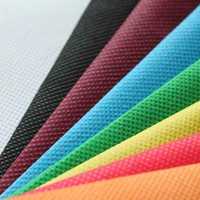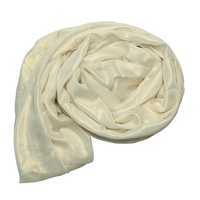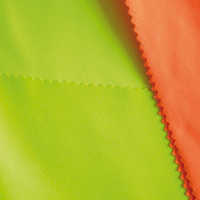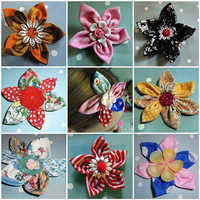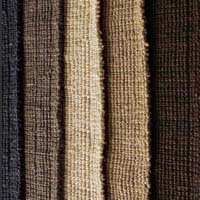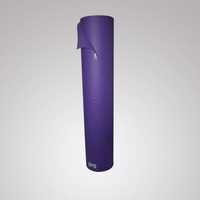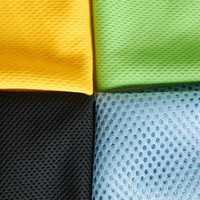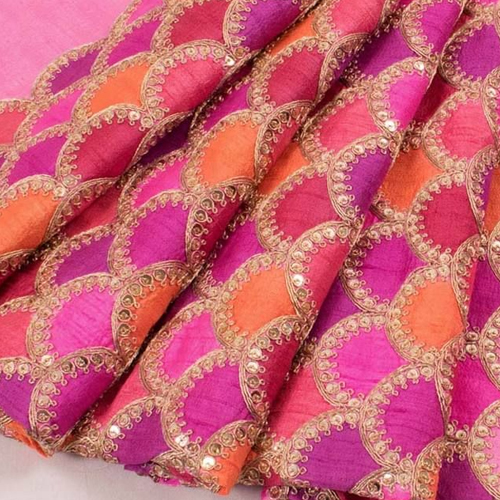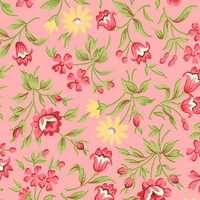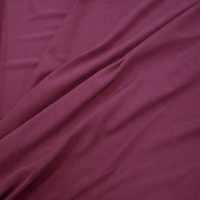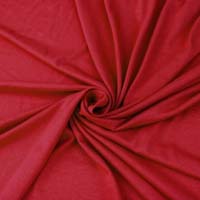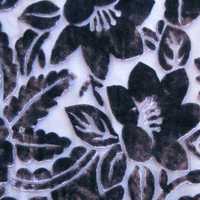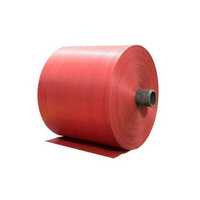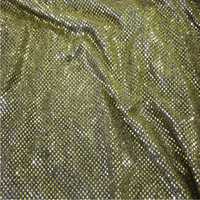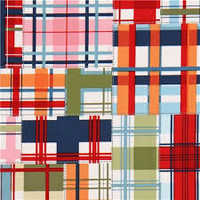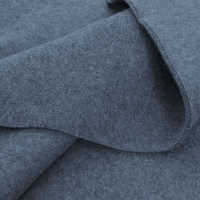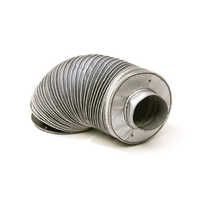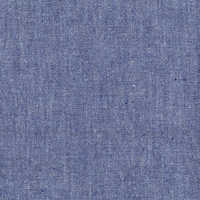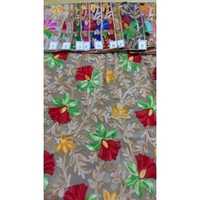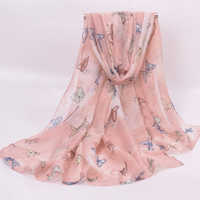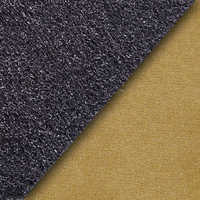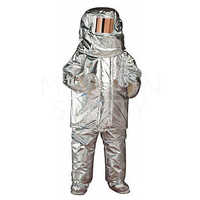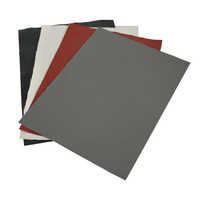Fabrics
(63422 products)
Explore More Categories
Needle Punched Geotextile Fabric
Price: 250 INR (Approx.)/Kilograms
21 Years
Business Type: Manufacturer | Distributor
KT EXPORTS INDIA PVT LTD.
Made in India
100% Cotton 160 Gsm And 58 Inches Multi Color Plain Solid Suiting Fabric
Price: 110 INR (Approx.)/Meter
MOQ - 1000 Meter
Width - 58 Inch (in)
Material - Pure Cotton
Texture - Plain
11 Years
Business Type: Manufacturer | Exporter
WOVEN FABRIC COMPANY
Made in India
Fire Proof Silicone Coated Glass Fiber Cloth
Price: 1350 INR (Approx.)/Square Meter
MOQ - 50 Square Meter/Square Meters
Product Type - Fire Blanket
Color - Red, Greay, Black
Weight - 1
5 Years
Response Rate: 80%
Business Type: Manufacturer | Distributor
Darshan Safety Zone
Made in India
Corporate Wear
Price: 675 INR (Approx.)/Yard
MOQ - 100 Yard/Yards
23 Years
Business Type: Manufacturer | Exporter
RUGHANI BROTHERS
Verified Exporter
( Accepts only Foreign Inquiry)
Woven Fabrics - Attributes: Colourfastness
Price: 135 INR (Approx.)/Meter
MOQ - 100 Meter
Material - Woven
Texture - Plain
Style - Plain
10 Years
Business Type: Manufacturer | Distributor
TARACHAND GUPTA & COMPANY
Verified Exporter
( Accepts only Foreign Inquiry)
Hessian Fabric
MOQ - 30 to 50 Ton/Tons
9 Years
Business Type: Manufacturer | Supplier
Premchand Jute & Industries Private Limited
Verified Exporter
( Accepts only Foreign Inquiry)
Made in India
Washable Yellow Fabric Roll
MOQ - 100 Kilograms/Kilograms
Material - Yellow
Texture - Plain
Use - Industrial
Business Type: Manufacturer | Exporter
NS ROLLING STEEL PRIVATE LIMITED
Fabric
5 Years
Business Type: Manufacturer | Exporter
DEVSHREE INTERNATIONAL PRIVATE LIMITED
Made in India
FIRE BARRIER CLOTH
Price: 450 INR (Approx.)/Number
MOQ - 1000 Number
2 Years
Business Type: Manufacturer | Distributor
TIMES FIBREFILL PVT. LTD.
Made in India
Plain Can Can Net Fabric Use: Lehanga Gown Ghagra
Price: 15 INR (Approx.)/Meter
MOQ - 100 Meter
Width - 58-60 Inch (in)
Weight - 16 Kilograms (kg)
Use - LEHANGA GOWN GHAGRA
3 Years
Business Type: Manufacturer | Supplier
SAI KIRPA
Indian Inquiries Only
Made in India
Hessian Fabric - Color: Brown
Price: 0.5 USD ($) (Approx.)/Twenty-Foot Container
MOQ - 1 Twenty-Foot Container
Weight - Customized Ounce (oz)
Yarn Count - Customized
Density - Customized Gram per cubic meter (g/m3)
11 Years
Business Type: Manufacturer | Supplier
HOOGHLY INFRASTRUCTURE PVT. LTD.
Verified Exporter
( Accepts only Foreign Inquiry)
Made in India
Linen Fabric Texture: Plain
Price Trend: 40.00 - 200.00 INR (Approx.)/Meter
MOQ - 5000 Meter/Meters
Texture - Plain
Style - Other Style
11 Years
Business Type: Manufacturer | Exporter
BALAVIGNA WEAVING MILLS PVT. LTD.
Made in India
Quick Dry Pp Woven Fabric Rolls
Price Trend: 100-120 INR (Approx.)/Kilograms
MOQ - 5000 Kilograms/Kilograms
Weight - Customize Kilograms (kg)
Color - Multicolor
Plastic Type - PP
6 Years
Business Type: Manufacturer | Distributor
RAJKOT POLYFAB LLP
PP Woven Jumbo Fabric
Price: 80 INR (Approx.)/Ton
MOQ - 2 Ton/Tons
7 Years
Business Type: Manufacturer | Supplier
FORMOSA SYNTHETICS PRIVATE LIMITED
Made in India
Blue Crepe Printed Kurti Fabric
Price: 95 INR (Approx.)/Meter
MOQ - 100 Meter
Material - Fabric
Texture - Printed
Attributes - Light in Weight, Washable, Stretchable, Tear-Resistant
3 Years
Business Type: Trading Company
MADHAV SILK MILLS
Indian Inquiries Only
Made in India
PP Woven Fabric
9 Years
Business Type: Manufacturer | Exporter
DEV POLYPACK
Verified Exporter
( Accepts only Foreign Inquiry)
Made in India
Washable Jacquard Blouse Fabrics
Price Trend: 68.00 - 185.00 INR (Approx.)/Meter
MOQ - 200 Meter/Meters
Material - Fabric
Texture - Printed
Length - 1066.8 Millimeter (mm)
9 Years
Business Type: Manufacturer | Distributor
VIVEK TEXTILES
Made in India
Light In Weight Nu Buck Fabric For Shoes
Price: 700 INR (Approx.)/Meter
MOQ - 10000 Meter
Color - Black
Material - PU Coated Fabric
Texture - Plain
2 Years
Business Type: Exporter
MAHALAXMI OVERSEAS
Made in India
Upholstery Fabric
Price: 25 INR (Approx.)/Meter
MOQ - 25 Meter/Meters
12 Years
Business Type: Manufacturer | Supplier
RITIKA FASHIONS
Sportswear Lower Fabric
Price Trend: 200.00 - 600.00 INR (Approx.)/Meter
MOQ - 1000 Meter
9 Years
Business Type: Distributor | Trading Company
HANUMAN PRASAD & SONS
Indian Inquiries Only
Made in India
Splash Resistant Fabric
Price: 1 INR (Approx.)/Piece
MOQ - 1 Piece/Pieces
4 Years
Response Rate: 76.19%
Business Type: Manufacturer | Exporter
SRI KALYAN EXPORT PVT LTD.
Verified Exporter
( Accepts only Foreign Inquiry)
Brown And Green Brown 1.5Mm Thick Silicone Coated Texturized Fiberglass Fabric (Both Sides)
5 Years
Business Type: Manufacturer | Exporter
WALLEAN INDUSTRIES
Light In Weight 1 Inch Loop Patti
Price: 155 INR (Approx.)/Kilograms
MOQ - 100 Kilograms/Kilograms
Material - Non Woven
Texture - Plain
Style - Plain
2 Years
Business Type: Manufacturer | Trading Company
ZON TECH PVT. LTD.
Made in India
Washable Multicolor Printed Fabric
Price: 480 INR (Approx.)/Kilograms
MOQ - 100 Kilograms/Kilograms
Color - Different Available
Use - Commercial
Attributes - Washable
2 Years
Business Type: Manufacturer | Supplier
RADHIKA FABRICS
Fiberglass Fabric
21 Years
Business Type: Manufacturer | Exporter
SHREE SHYAM CORPORATION
Made in India
Washable Non Woven Sterilization Wrap Fabric
Price: 400 INR (Approx.)/Piece
MOQ - 100 Piece/Pieces
Material - Non Woven Fabrics
Texture - Plain
Use - Commercial
2 Years
Business Type: Manufacturer | Distributor
KONKORE PACKAGING PRIVATE LIMITED
Made in India
Quick Dry Crush Satin Fabric
Price Trend: 350.00 - 500.00 INR (Approx.)/Piece
MOQ - 100 Piece/Pieces
Width - 1473.2 - 1524 Millimeter (mm)
Material - Fabric Cloth
Texture - Plain
12 Years
Response Rate: 81.00%
Business Type: Manufacturer | Distributor
GLOBAL LINEN COMPANY
Made in India
Unstitched Full Ariwork Dress
Price: 349 INR (Approx.)/Unit
MOQ - 10 Unit/Units
6 Years
Business Type: Manufacturer | Trading Company
SADABAHAR FASHION
Fabrics Manufacturers | Suppliers in India
| Company Name | Location | Member Since |
|---|---|---|
| Rughani Brothers | Mumbai, India | 23 Years |
| Kt Exports India Pvt Ltd. | Mumbai, India | 21 Years |
| Shree Shyam Corporation | Ahmedabad, India | 21 Years |
| Ritika Fashions | Kolkata, India | 12 Years |
| Global Linen Company | Surat, India | 12 Years |
| Woven Fabric Company | Mumbai, India | 11 Years |
| Hooghly Infrastructure Pvt. Ltd. | Kolkata, India | 11 Years |
| Balavigna Weaving Mills Pvt. Ltd. | Dindigul, India | 11 Years |
| Tarachand Gupta & Company | Kolkata, India | 10 Years |
| Premchand Jute & Industries Private Limited | North 24 Parganas, India | 9 Years |
Important Considerations When Choosing Fabrics
1. Think About the Weight of the Fabric
Fabrics are classified by their weight, which is expressed in GSM (grams per square meter). Relax, you won't need to weigh the fabric before you buy it. You can tell the difference between lightweight, medium weight, and heavyweight fabric by measuring its weight
2. Check out the Cloak made of Fabric
How the fabric falls is determined by the drape. In contrast, flowing textiles have greater drape and are more forgiving of movement. Easy! But tread lightly with this expression. Though both weight and drape can alter the aesthetic of a garment, they are actually two separate aspects.
The skirt will billow away from your body in a fabric with greater drape, while it will fold in on itself in a fabric with a delicate drape.
Choosing a light and well-draping fabric, for instance, will result in a skirt with more movement, while a stiff and dense fabric will result in a more structured skirt.
3. Assess the Stretch of the Material
Fabrics vary in their degree of stretchiness. Different fabrics have varying degrees of elasticity (the degree to which stretched fibers of a fabric return to their original shape). As the stretch of the fabric affects the way the finished item drapes and fits the body, it is important to double-check that your pattern will work with the fabric you've chosen.
Stretch can be measured by holding one end of five inches of cloth at the zero mark and extending the other end until resistance is felt. The resulting number is then divided by the original length of the fabric to determine the percentage of stretch.
So, if you have cloth that can be stretched to 7.5 inches, it means it has increased in length by 2.5 inches. The elasticity here is at half maximum.
What exactly does fabric mean?
Fabric refers to any material woven from a variety of threads such as silk, wool, nylon, cotton, and so on. Fabrics are used to create garments, home decor, and linens.
Fabric can refer to either the cloth they create through techniques like weaving and knitting, or the structural components of a building. Braiding, felting, and twisting are all methods used to create textiles.
What are the different categories of fabrics?
1. Modal
Made from recycled beech wood pulp, modal is a popular choice for sleepwear, loungewear, and home textiles like sheets and towels.
2. Merino Wool
The wool from Merino sheep is known as Merino wool. T Merino wool is one of the softest varieties of wool and doesn't irritate the skin like regular wool does.
3. Damask
Damask is a jacquard-woven fabric with two distinct sides. Unlike printed fabrics, the design is woven into the fabric, making it reversible.
4. Cotton
Cotton is what's called a staple fiber, and that means its fibers come in a wide range of lengths. The cotton plants' fibers are processed to create the fabric.
5. Chenille
Both the yarn and the cloth used to create this plush textile are known as chenille. Yarn is made by purposefully piling the threads to mimic the caterpillar's hairy shell.
6. Chiffon
The lustrous chiffon is a sheer, lightweight, plain-woven fabric. Chiffon is slightly scratchy to the touch because of its tiny puckers. Crepe yarns twisted in an s-twist (counterclockwise) or a z-twist (clockwise) are used to produce these puckers. Crepe yarns also have a significantly tighter twist than ordinary yarns.
7. Canvas
The yarns used to create canvas are normally thick cotton or, less commonly, linen. Canvas is a strong, long-lasting, and robust fabric.
8. Cashmere
Fabrics woven from the wool of cashmere goats and pashmina goats are known as cashmere. Cashmere is a natural material that is both warm and luxurious to the touch.
9. Crepe
Crêpe is a fabric that can be made from silk, wool, or synthetic materials and has a wrinkled, bumpy appearance. Most of the time, crêpe is a medium-weight fabric at the most. Dresses, suits, blouses, pants, and more can all be fashioned from crepe fabric.
10. Georgette
Although traditionally manufactured from pure silk, synthetic fibers such as rayon, viscose, and polyester can also be used to create the crêpe fabric known as georgette. Crepe georgette is characterized by a subtle crinkle due to the tightly twisted threads used in its weaving. The translucent, lightweight, and breathable georgette fabric has a drab, matte texture.
11. Jersey
Jersey, a knit fabric known for its softness and suppleness, was originally crafted from wool. These days, synthetic fibers, as well as cotton and cotton blends, can be used to create jersey.
12. Gingham
Cotton (or a cotton blend) fabric with a checkered pattern created by coloured yarn woven in a plain weave is called gingham.
13. Linen
Despite the fact that not all bed linens are crafted from linen fabric, the term "linens" is still used to refer to the aforementioned linen-based household products.
14. Muslin
Muslin, a cotton fabric with an open weave, is commonly used for this purpose. The plain weave construction involves passing one weft yarn over and beneath another warp yarn at regular intervals.
15. Leather
Leather refers to any fabric crafted from animal hides or skins, with various varieties of leather being the end result of using different species of animals and various tanning and finishing processes.
16. Lace
Lace is a type of delicate fabric that is often woven from yarn or thread and features intricate, open-weave patterns and decorations.
17. Polyester
An artificial synthetic textile, polyester is developed from fossil fuels like coal and petroleum. Polyester is a strong and long-lasting material, but it doesn't breathe well and doesn't soak up liquids like sweat very well.
18. Organza
This fabric, known as organza, was first crafted from silk and is now created from a variety of other materials. Synthetic fibers like polyester and nylon can also be used to create the fabric.
19. Silk
Silk is a natural textile that is spun by the cocoons of the silkworm insect. Silk is a luxurious fabric that is both smooth and shiny.
20. Spandex
Spandex, also called Lycra and elastane, is an extremely elastic synthetic textile.
21. Satin
To go along with plain weave and twill, satin is one of the three most common textile weaves. A satin weave produces a stretchy, glossy, silky, and drapey fabric.
What is the best fabric quality?
Let’s discover top 3 high quality fabrics that suitable for outfits:
1. Silk
Silk is the quintessential lavish fabric, renowned for its decadence and exquisiteness. Silk is great for a refined wardrobe because it is breathable, lightweight, and visually stunning. Although delicate, this priceless fabric can withstand a lot of wear and tear before showing signs of wear. Silk and iron wire of the same diameter has the same tensile strength, which is the resistance to breaking under tension.
2. Leather
In spite of its common usage as a textile, leather is actually a raw material (created from animal skin by tanning or a comparable process) rather than a fabric. Leather is often derived from cattle, sheep, goats, or pigs. Shell Cordovan is luxurious horsehide leather that is polished to a mirror sheen and used to craft expensive footwear.
3. Linen
Linen is another high-end fabric that is both fashionable and durable. Linen, a textile derived from flax, is among the world's first examples of textile production. Linen was a common cloth for medieval European peasants to wear. Linen, on the other hand, is much sought after now since it is fashionable and keeps one's body temperature down.
How do you choose the right fabric?
1. Choose your project
There are several approaches to choosing a new project; personally, I like to browse Pinterest for ideas and then figure out the simplest method to implement them. You can either use a pattern, or follow one of the many tutorials available on the site.
2. Do your Research
It's a good idea to learn as much as you can about the garment you want to sew online or in a library. My favorite pastime is window shopping, where I can observe the wares and materials of various businesses.
3. Check the drapes
Wherever you go fabric shopping, always unroll a few yards to check out the drape. How the cloth hangs, or 'drapes,' on the body will be crucial to the overall aesthetic of the finished garment.
4. Assess the width
The width of your fabric will influence how much you need to purchase; the most typical sizes are 60 inches (150cm) and 45 inches (112.5cm).
5. Check the color
Fabrics should be inspected in natural light (or near a window) before purchase because the lighting in a store can make a color look different from what it actually is.
Conclusion
When shopping for fabrics, the return policy and a detailed description of the fabrics are essential. Since you are purchasing the fabric online without physically handling it, the vendor should have no problem with you returning it. In addition, you have to rely on the product description when purchasing fabric online, thus the shop ought to have a proper name and description of the goods encompassing all the above parameters.
FAQs: Fabrics
What is the most comfortable fabric?
Cotton is the most pleasant fabric to wear since it is light in weight, soft to the touch, and allows for excellent air circulation.
Which fabric is best for everyday wear?
Cotton is the only fabric that can be worn every day. However, the fabric depends on the weather.
What fabric material lasts the longest?
Given that it is among the most long-lasting fabrics available, linen has a long useful life.
Types of Fabrics In The Textiles Industry
Embroidery Fabric, Satin, Silk, Cotton, Denim, Polyester, Taffeta, Crepe, Leather, Georgette, linen, Canvas, Cashmere, Chenille, Chiffon and others fabrics are available in the textile industry.
Related Categories
Acrylic Fabric
Blend Fabric
Chiffon Fabric
Coated Fabrics
Corduroy & Velvet Fabric
Cotton Fabric
Cotton Textile Materials
Cotton Yarn
Curtain Fabric
Denim Fabric
Durries
Embroidery Designs
Fabrics
Felt & Felt Products
Fibres
Flocked Fabric
Foam,Rexine & PU Products
Georgette Fabric
Geotextiles
Glass Fiber Yarns
Grey Fabric
Handloom Products
Handwoven Textiles
Hosiery Fabric
Industrial Fabric
Knitted Fabric
Linen Fabric
Linen Materials
Metallized Fabric
Military Tent
Narrow Fabric
Non Woven Fabric
Nylon Fabric
Polyester Fabric
Polyester Yarn
Polypropylene Fabric
Printed Fabric
Raw Silk Yarn
Rayon Fabric
Rope,Twines & Webbings
Ropes
Satin Fabric
Sewing Threads
Silk Textile Materials
Silk, Silk Fabric
Spandex Fabric
Suede Fabric
Synthetic Fabric
Synthetic Fibres
Synthetic Yarn
Taffeta Fabric
Tassels & Trimmings
Tents & Tarpaulins
Textile Accessories
Textile Agents
Textile Articles
Textile Materials
Textile Testing Equipment
Textiles Auxiliaries
Threads
Upholstery Textile
Velvet Textile Materials
Viscose Fabric
Wool Fabric
Wool Textile Material
Yarn
Zari & Glitter Products

